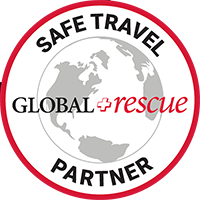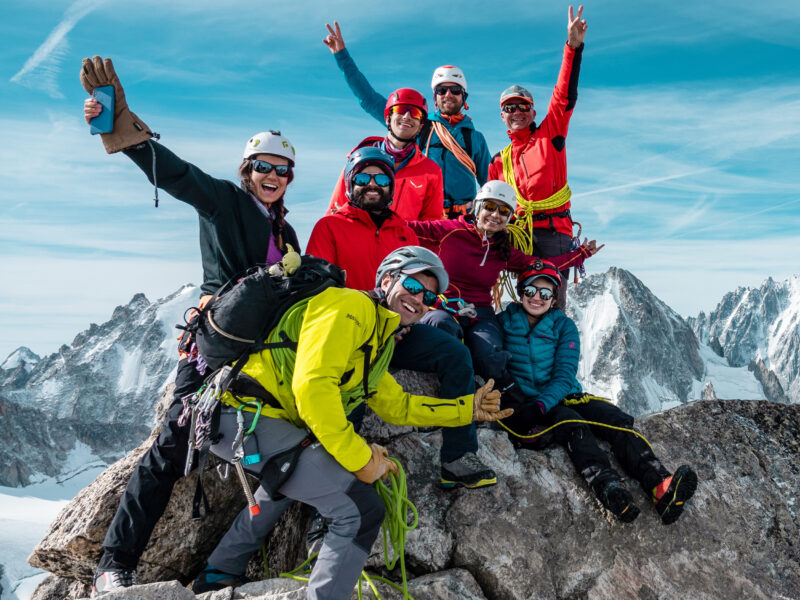BY Rami Rasamny | March 24 2025
10 Tips for Climbing Mont Blanc
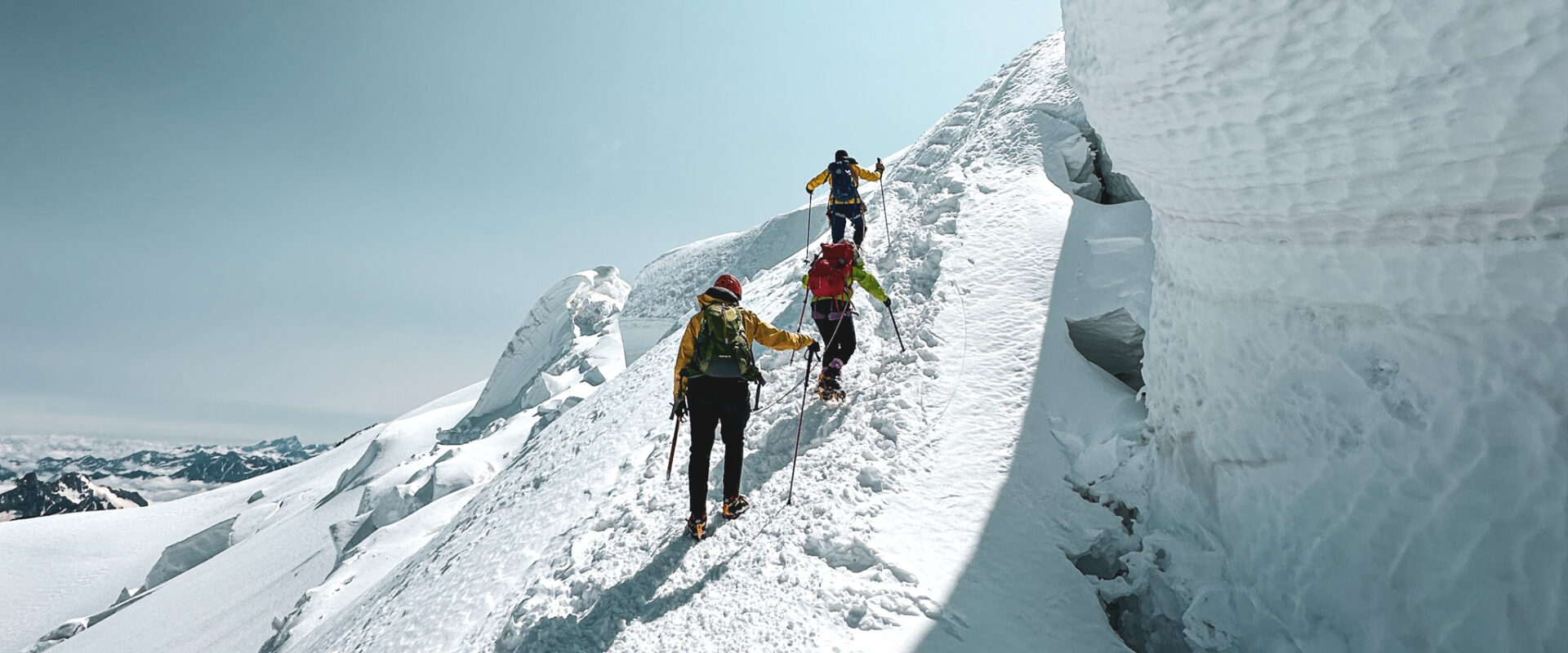
Climbing Mont Blanc is not just about reaching the highest summit in Western Europe. It is about stepping into the alpine world, embracing challenge, and discovering what is possible when you say yes to adventure. Whether you are preparing for a Mont Blanc summit with Life Happens Outdoors or planning your own Mont Blanc climb, it is essential to show up ready; physically, mentally, and strategically.
If you are wondering how to climb Mont Blanc successfully and safely, these ten tips will set you on the right path.
1. Train your cardio
A successful Mont Blanc summit starts with fitness, and cardio endurance is key. Climbing Mont Blanc is a sustained effort that demands a steady and efficient pace with very limited breaks. It is not about explosive strength. It is about maintaining rhythm and output over a full day in high altitude terrain. Your engine matters more than your muscle.
2. Less is more
On your Mont Blanc climb, every extra item in your pack adds up. You want to move light and smart. Bring only what is essential for safety and comfort. On a Life Happens Outdoors trip, your guide carries technical equipment like ice screws and slings. Your focus should be on fluid movement, not unnecessary weight. Layers, water, snacks, and personal gear. Nothing more and nothing less.
3. Choose your gear wisely
Mont Blanc climbing is about efficiency, not bulk. Heavy rock climbing gear is designed for a very different kind of impact and environment. For this terrain, you want a lightweight alpine harness, a light helmet, and a mountaineering ice axe that helps you move with ease on snow and mixed ground. The right gear helps you move faster and feel better throughout the day.
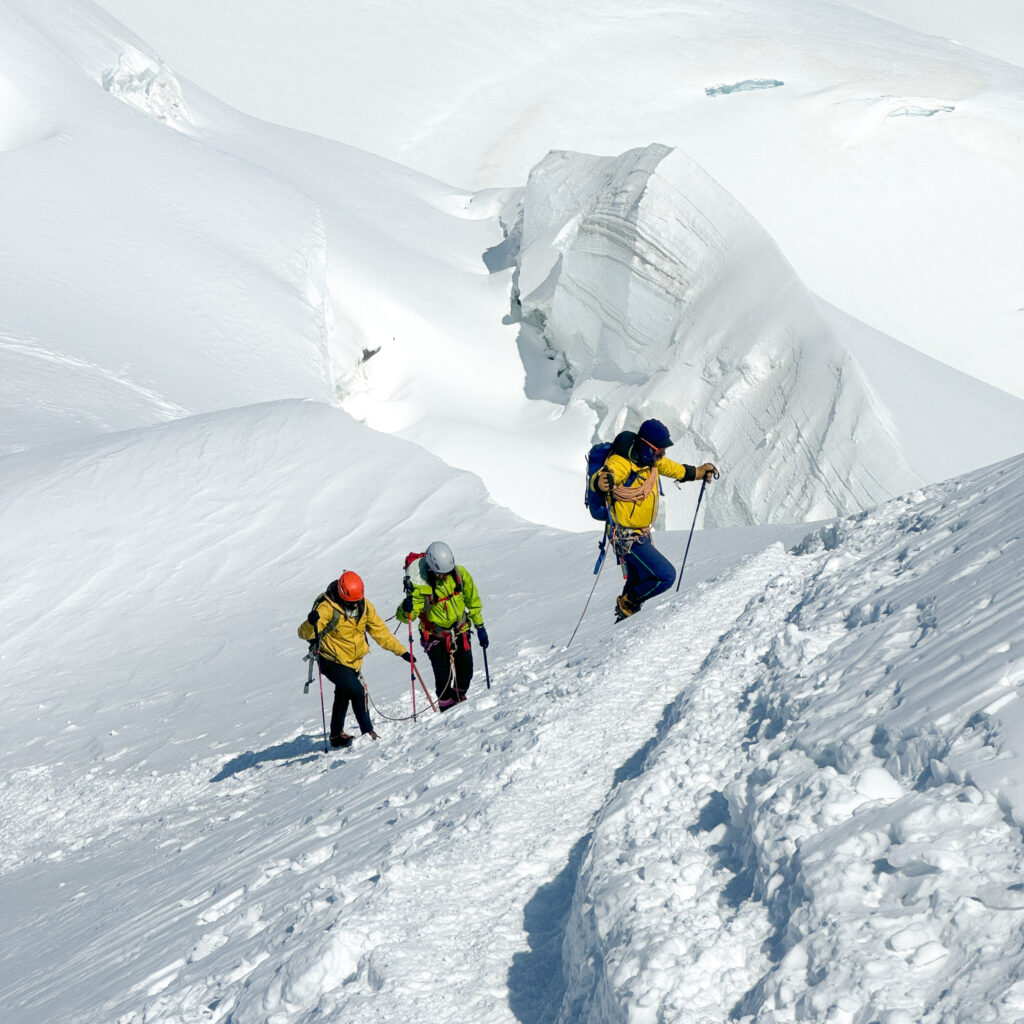
4. Be efficient with food and water
Fuelling and hydration can make or break your Mont Blanc climb, but it is not just about what you consume. It is about how and when. Snacks should be high in sugar, quick to access, and easy to eat on the move — energy bars, sweets, or anything that works well in your system. A small sandwich or chocolate bar is great for longer breaks, and electrolytes help keep your balance in check.
But do not introduce anything new to your system on the mountain. If you do not normally use energy gels, do not try them for the first time at 4000 meters. Your body may not respond well, and summit day is not the moment to find out.
Water management is just as critical. After the Gouter Hut, there are no refill points, and carrying too much water weighs you down. Sip regularly, think ahead, and always reserve enough for the descent. Many climbers hydrate heavily early on and then run dry when it matters most.
5. Come with the right mindset
Weather turns back nearly half of all Mont Blanc summit attempts. That is not a failure — that is the mountain reminding you who is in charge. If you show up with a summit or nothing attitude, you will likely miss the richness of the experience. Come for the climb, for the learning, for the rhythm of alpine movement. If the summit comes, it is a gift — not the sole purpose of your journey.
6. Acclimatise before attempting the Mont Blanc
The summit sits at 4810 meters, and it does not matter how close it looks from Chamonix. Your body will feel the altitude. How to climb Mont Blanc successfully starts with giving yourself the time to adjust. Spend a few nights in high huts, climb lower peaks nearby, and let your body adapt. Acclimatisation makes a real difference in performance and safety.
7. Do not book trips in August
If you are looking for the best time to climb Mont Blanc, avoid August. The last few seasons have seen a pattern of intense heatwaves that have made climbing Mont Blanc significantly more dangerous. Rising temperatures increase rockfall risk and destabilise the glacier crossings. In some years, local authorities have even closed the high mountain huts to discourage ascents during these periods. Safer conditions are usually found in June, July, or early September.
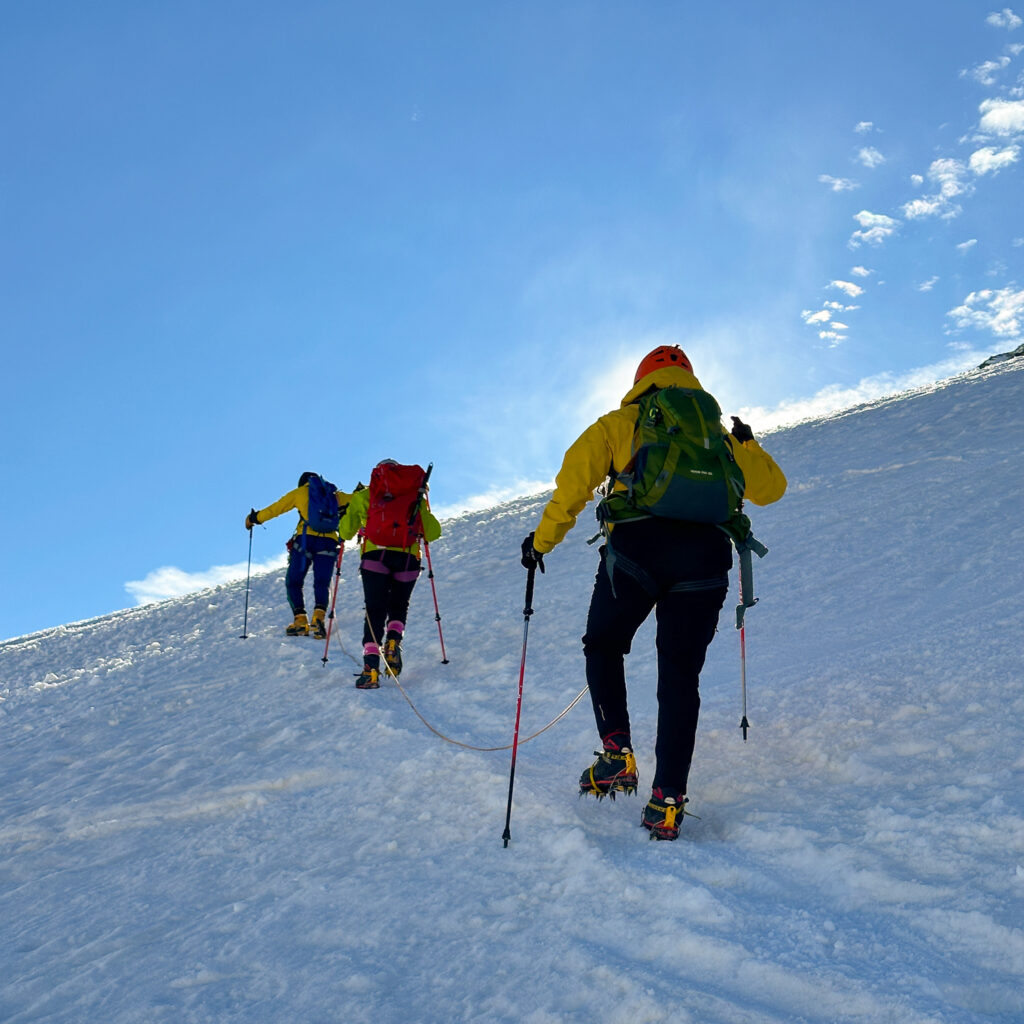
8. Do not leave it to the last minute
Planning a Mont Blanc climb takes time. The high altitude huts fill up months in advance — often by January for the summer season. Local regulations also require you to have a confirmed hut booking in order to access the Gouter Route unless you are doing the entire climb in one push. The best guides are also booked early. If you want a Mont Blanc summit experience that is about more than ticking a box, give yourself the time to prepare properly and secure the right support team.
9. If this is your first alpine experience, do not buy boots
Modern alpine boots are highly specialised. What works on Mont Blanc in the summer will not necessarily work for the Matterhorn, Aconcagua, or high altitude expeditions in the Himalayas. If this is your first Mont Blanc climbing experience, rent your boots. Then speak to your Life Happens Outdoors Team Leader or guide about the kind of climbs you are aiming for next. That way you can invest in boots that match your climbing journey — not just one route.
10. Listen to your guide
One of the most important elements of how to climb Mont Blanc successfully is learning to trust your guide. Ask questions, learn, and stay curious, but when you are in the alpine environment, listen to their decisions. Guides make calls based on years of experience, weather patterns, terrain conditions, group dynamics, and safety risks that may not be obvious at first glance. If your guide turns the group around and others appear to be heading for the summit, trust that there is a reason. Their priority is your safety, not comparison with what others are doing.
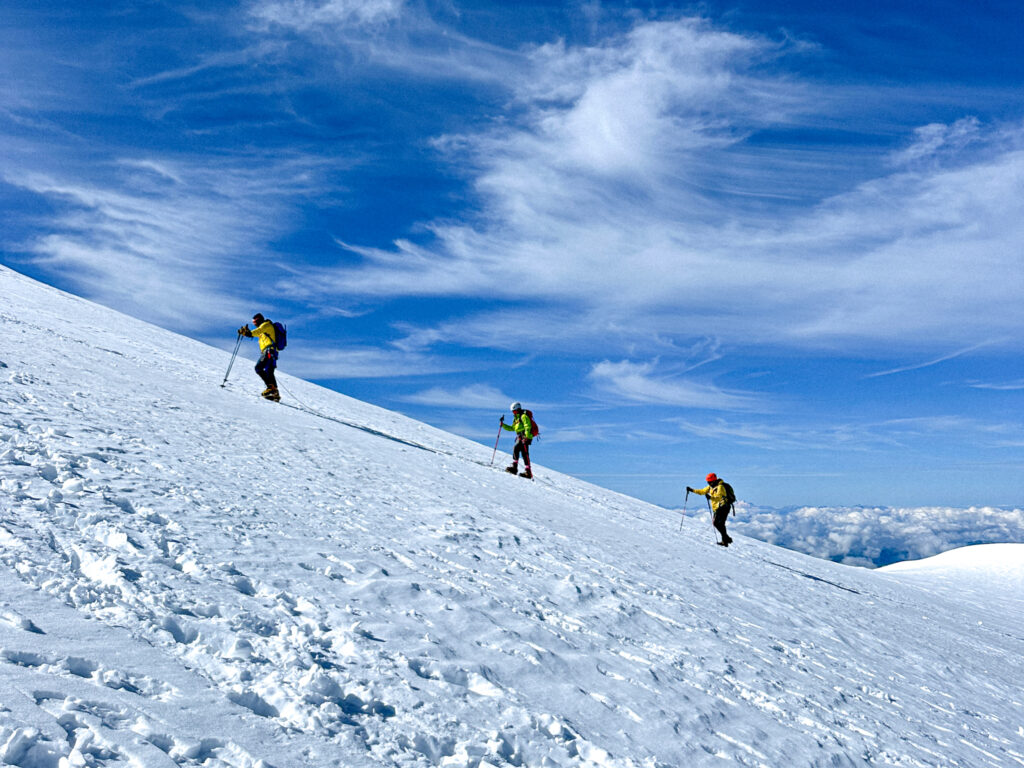
Final thoughts
Climbing Mont Blanc is a powerful experience, one that stays with you long after you come back down. It is not just about reaching a summit. It is about showing up prepared, moving through a wild and beautiful environment, and discovering what you are capable of. When you train right, plan well, and let the experience unfold, the mountain will give you more than a summit. It will give you perspective, growth, and connection.
If you are ready to explore your limits and take on the Mont Blanc summit with a team that believes in transformation through adventure, check out our Mont Blanc Summit Course and start your journey with Life Happens Outdoors.
About The Author
Rami Rasamny is the founder of Life Happens Outdoors, a premium adventure travel community dedicated to transforming lives through curated outdoor experiences. A mountaineer and entrepreneur, Rami has led teams on some of the world’s most challenging peaks, from the Alps to the Himalayas. His mission is to make adventure accessible, transformative, and safe for all who seek to push their limits and Come Back Different.
About Life Happens Outdoors
At Life Happens Outdoors, we believe in the power of nature to transform lives. As proud members of the Adventure Travel Trade Association (ATTA) and the World Travel & Tourism Council (WTTC), our team of certified guides and outdoor professionals is committed to the highest standards of safety, sustainability, and excellence.
Discover more about our story and mission on our Meet LHO page, or explore our curated adventures such as the Tour du Mont Blanc Trek, the Climb of Kilimanjaro, and Chasing the Northern Lights.











